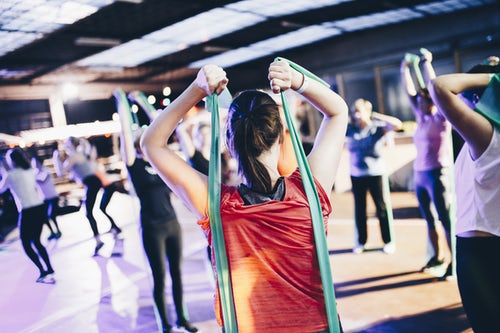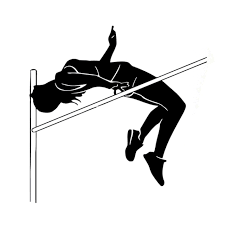There’s a passage in the book of Colossians where St. Paul writes:
“Devote yourselves to prayer, being watchful and thankful.”
And you may be familiar with his directive to the Thessalonians to:
“Rejoice always, pray without ceasing, give thanks in all circumstances; for this is the will of God in Christ Jesus for you.”
There is nothing like drawing yourself away to a special, quiet place to commune with God in prayer, uninterrupted and unconcerned about time.
But I get it. I know it’s sometimes difficult to squeeze in prayer time in our over-saturated schedules, especially if we haven’t penciled in or planned on a specific time to devote to it.
So what should we do? Say, “Ah, well, I’ll try again tomorrow?”
Or do we look for another way to pray. A way that can be both satisfying and effective.
After struggling with this for a while, I knew I needed to get creative with my prayer life. While I feel something critical is missing if I don’t sit down in the morning and start my day with a time of Bible reading, devotion and prayer, there are other times of the day I feel the distinct calling of God to pray for someone in particular, someone He brings to mind. And I know I need to pray for that person, right then and there.
I can’t always stop what I’m in the middle of, so I need to utter a quick, but focused and heartfelt prayer. If I have time, I might text them a “How are you doing?” message, if that’s what I feel I’m being led to do. Just letting someone know they’re on your mind often does wonders for their spirits, and it’s all God asks you to do.
But what about those other directives Paul gives us about praying for the church, for our nation’s leaders, other believers? How do possibly accomplish that on a busy day?
A lot of organizations and groups have devised techniques to help us remember the five major prayer points or encourage us in our prayer life. Here are several of them you can use or adapt for your situation or needs.
Maybe some of them can help us accomplish what seems an impossible task.
The Five Finger Prayer Prompt—
The basics of this prayer are:
Praise—(thumb) praising God and Jesus for who they are
Thanksgiving—(index or pointer finger) Thanking God for His love and salvation
Confession—(middle finger) Confessing our sins and shortcomings
Intercession—(ring finger) Praying for others in need
Petition—(pinky finger) Praying for ourselves
Another type of five-finger prayer is one frequently taught to children.
Thumb—Pray for those closest to you
Index or Pointer finger—Pray for those who teach and heal, like teachers, doctors, and minsters in need of wisdom and patience in leading others
Middle finger—Because this finger is the tallest, it has been designated for prayers for government and business and administrative leaders. While they need wisdom too, the Bible says we need to pray for them so we can live in peace.
Ring finger—Because this finger is the weakest finger, it represents those who are weak, ill, or in mental anguish or pain. They need constant prayer.
Little or pinky finger—This finger is reserved for praying for yourself. The feeling is that once you’ve prayed for all of the other people, you can better put your needs into perspective at the end.
It’s easy to put either of these two finger methods to great use when you’re out walking, or at the gym working out; when you’re cleaning house or working in the yard or your garden.
Labyrinth Praying—

Can’t go on a long pilgrimage? Try using a labyrinth prayer model.
A labyrinth is defined as a clear path in and out with a center where you can stop and rest. It was developed in the Middle Ages for those who couldn’t go on long pilgrimage journeys.
You may have a labyrinth in your town you can visit. One of our local hospitals has set up a small one outside one of their buildings. As most are, it’s a circle design where the path is outlined by rocks. My husband and I encountered one of a slightly different design—although still a circle—in a lavender farm in the rolling foothills of Mt. Shasta in Northern California. Instead of rocks, beautiful English and French lavender plants lined the route. The exquisite views and splendid aroma added a sense of peace to the walk.
Don’t have a labyrinth near you? Consider designing one in your backyard. Although most are circles, I don’t think it has to be. Just designate a clear path you can enter, a destination where you can stand or sit a moment in meditation and rest, and a path by which you exit.
Or figure out an outside area where you work that would be suitable for you to walk as a labyrinth. Is there a usually-quiet break courtyard you could use? Could you walk around the building?
Get creative!
Prayer walking through your home—
Another technique is walking through your home and praying for specific concerns or needs in each room. Or thanking God for the blessings you’ve received there.
In the kitchen you might pray for inspiration on planning healthful meals for you and your family, wisdom in food preparation, a joy of cooking and meal prep.
In the family room you might focus on friends who have or will gather there, that they feel love and peace in your presence.
I’m sure you can think of a million prayers you could utter in each of your children’s rooms. Even if they’re grown and gone, you can thank God for their lives and the joy they’ve brought to yours, for any struggles they have, obstacles they face.
These prayers can be said when you’re cleaning these particular areas, or when you’re preparing for your day. When I’m preparing my beloved’s breakfast (and lunch he’ll pack off to work), I can do a lot of rejoicing for a husband who works hard and provides, and offer up my labors as a pleasing sacrifice to God, rather than moaning because I scraped myself out of bed before sunrise when my beloved has a 7:00 AM meeting.
When you’re at work, you can pray for each client that enters your door, each co-worker you encounter, each patient you’ll see.
You can turn down the talk radio program and offer up prayers at stoplights; pray for each person you see in the checkout line. It’s amazing what God reveals to you when you’re observing the people in front of you, including the checkout person. Harried moms with exhausted, whining children. Bleary-eyed high school and college students. Lonely seniors struggling to coordinate their credit card payments and lift their groceries.
Instead of looking at prayer as an obligation or burden, as I am sometimes guilty of doing, I can view praying as a privilege, a way to connect myself—and others—to God. A way to enrich and change my life and the lives of others. I often remind myself that the prayers of a righteous person avails much!
It’s always amazing to me to see how my spiritual life deepens and expands when I approach prayer this way.
Would you like to share your techniques?
Do you have any special prayer techniques that have enriched your prayer life? We’d love to hear them!
It’s great when we can learn from others.
Until next week, when we look more closely at praying for ourselves as this new year unfolds, I encourage you to try one of the prayer techniques we’ve discussed today. And please let me know how it works for you!
Blessings,
Andrea
“Certainly there was an Eden….We all long for it, and we are constantly glimpsing it.” —J.R.R. Tolkien



